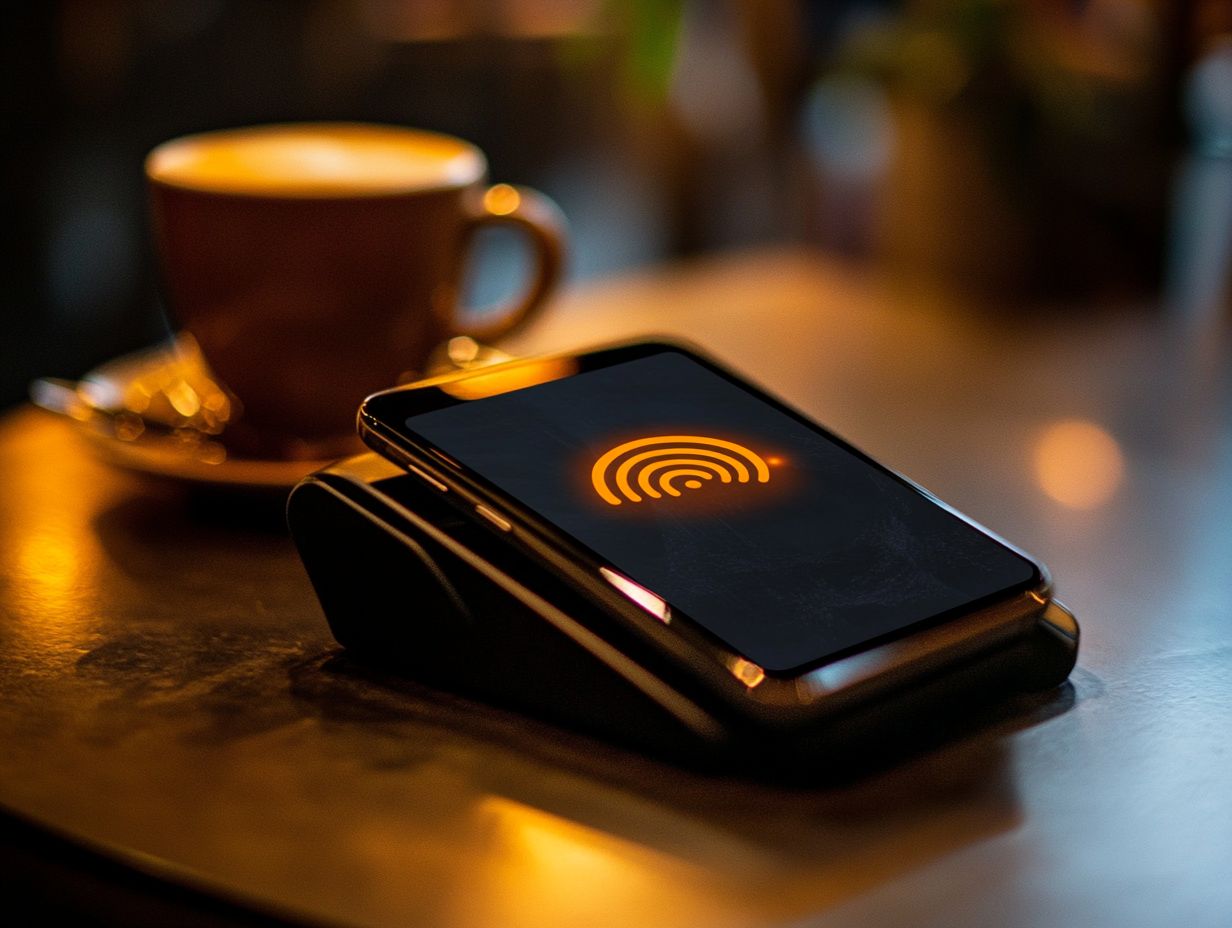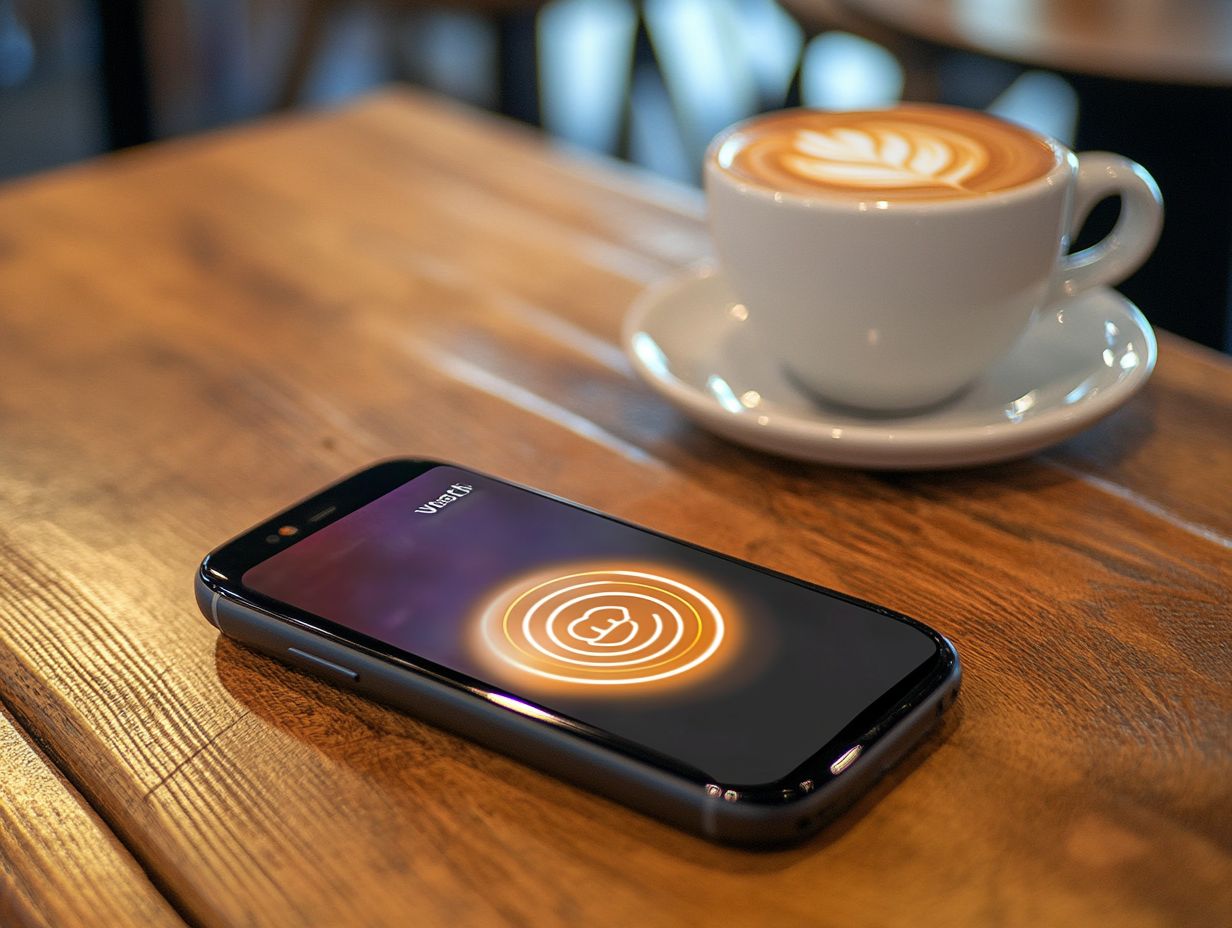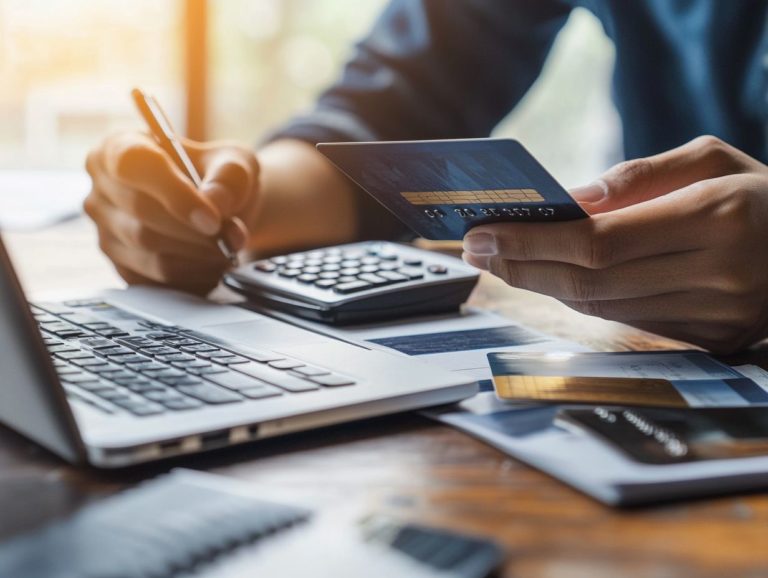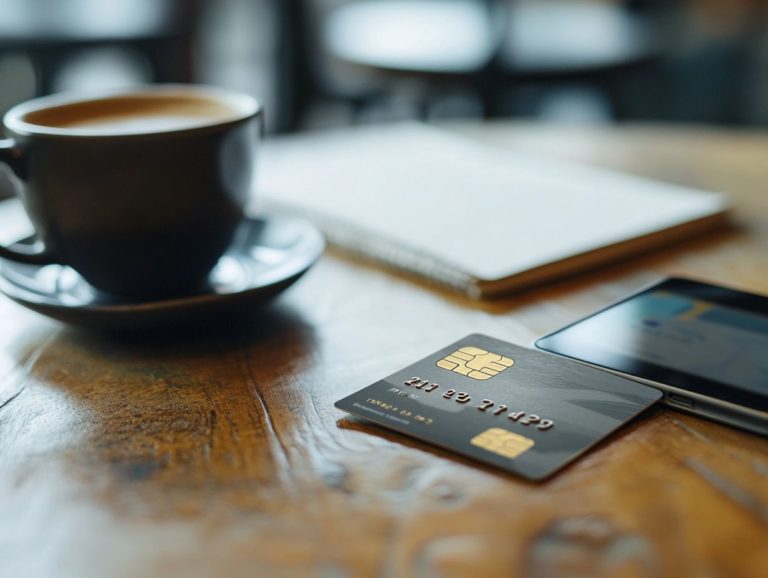What Is a Contactless Payment?
In today s fast-paced world, contactless payments are changing how you conduct transactions. They allow you to pay without any physical contact.
You will also discover the definition of contactless payments, how they operate, and the various types available to you.
We ll delve into their benefits, explore potential risks, and consider what the future holds for this cutting-edge technology.
Get ready to dive into the world of contactless payments! Stay ahead of the curve and discover how this technology can transform your shopping experience.
Contents
Key Takeaways:

- Contactless payments allow secure transactions without touching a terminal.
- This technology uses NFC or RFID to send payment info securely.
- Benefits include fast transactions and improved hygiene, but be aware of potential risks.
Understanding Contactless Payments
Contactless payments embody a modern approach to financial transactions. They enable you to complete purchases without any physical contact between your payment devices or terminals.
This innovation is fundamentally transforming how you engage with point-of-sale systems.
Contactless payments use NFC (Near Field Communication) and RFID (Radio Frequency Identification) technologies. They have gained popularity, especially during the COVID-19 pandemic, as consumers seek safer ways to pay.
With the growing adoption of digital wallet apps like Apple Pay, Google Pay, and Samsung Pay, these payment methods are reshaping the landscape of financial transactions. It s easier than ever for you to manage your purchases seamlessly.
Definition and Explanation
Contactless payment represents a groundbreaking shift in how you manage your financial transactions. With this technology, you can effortlessly make wireless payments through digital wallet apps, all without the need for physical contact.
This creates a seamless and efficient checkout experience at various retail outlets.
The system harnesses the power of Near Field Communication (NFC) or Radio Frequency Identification (RFID). This enables your devices be it a smartphone or a specialized card to communicate swiftly and securely with payment terminals.
As you approach a compatible terminal, your device transmits payment information through electromagnetic fields, completing the transaction in mere seconds. Retailers have widely embraced this method due to its speed and convenience, significantly enhancing your overall shopping experience.
By opting for contactless payments, you reduce the need to handle cash or insert cards, minimizing physical interactions. This is particularly advantageous in high-traffic areas and during times of heightened public health concerns.
Not only does this technology offer enhanced security measures, but it also fosters quicker service, allowing you to focus on your purchases rather than enduring lengthy checkout processes.
How Contactless Payments Work
Contactless payments leverage NFC and RFID technologies, allowing you to complete transactions swiftly and securely by simply tapping your chip-enabled bank card or mobile device against a contactless-enabled terminal.
This streamlined process reduces friction and enhances operational efficiency at points of sale, providing you with a seamless consumer experience.
Every transaction is secured with advanced measures like biometric authentication and a unique transaction number. This helps protect you from fraud, fostering trust in contactless financial systems.
Technology and Process
The technology behind contactless payments relies on near-field communication (NFC) and radio-frequency identification (RFID) technologies. These enable your chip-enabled bank cards to communicate securely with contactless-enabled terminals.
This seamless interaction occurs at close range, typically just a few centimeters away. It allows quick transactions that enhance your experience. When you tap your card or device on the payment terminal, the RFID chip sends encrypted data containing all the essential information for the transaction.
The speed of this process not only reduces wait times but also promotes the wider adoption of contactless payment methods. To boost security, transaction limits are often set to minimize the risk of fraud if the card happens to go missing.
Ultimately, these technologies strike a perfect balance between convenience and security, making your everyday transactions easier and safer.
Benefits of Contactless Payments

The benefits of contactless payments are truly multifaceted, offering you a checkout experience that seamlessly balances convenience and security.
As these payment methods evolve, they enhance your trust and streamline the transaction process, effectively reducing those frustrating wait times at checkout.
Importantly, the security tokens and fraud protection measures integrated into contactless transactions bolster your confidence in digital wallet apps and payment information management.
In an era where speed and safety are crucial, these methods become increasingly appealing. They make your purchasing experience not only efficient but also secure.
Convenience and Security
One of the most compelling advantages of contactless payments is their remarkable convenience paired with strong security features. Features like security tokens and fraud protection significantly bolster your trust in these transactions.
By eliminating the need for cash or card swipes, you can effortlessly tap your device to make quick purchases, cutting down on wait times and streamlining the checkout process.
Advanced encryption techniques and tokenization not only safeguard your sensitive information but also minimize the risk of data breaches.
Many financial institutions and payment companies have adopted sophisticated fraud detection systems that monitor transactions in real time, swiftly flagging any suspicious activity before it impacts you. As these protective measures evolve, they offer additional reassurance, allowing you to enjoy the speed and ease of contactless payments without compromising your financial security.
Types of Contactless Payments
A range of contactless payment options has emerged, thoughtfully catering to your diverse preferences and the latest technological advancements. From contactless debit and credit cards to mobile wallet apps like Google Pay, Apple Pay, and Samsung Pay, these methods are designed to streamline your transaction experience.
They offer the convenience of quick payments, often accommodating micropayments that enable low-value purchases without the hassle of cash or magnetic stripe cards. Each contactless payment option comes with transaction limits to enhance security while encouraging broader consumer adoption.
Mobile Wallets and Cards
Mobile wallets and contactless debit and credit cards are leading the charge in the contactless payment revolution, giving you the flexibility to make quick transactions through platforms like Google Pay, Apple Pay, and Samsung Pay.
These cutting-edge solutions allow you to securely store multiple payment methods on your smartphone, making it easy to manage your finances while on the move. Unlike traditional contactless cards that require your physical presence for each transaction, mobile wallets streamline and expedite your checkout experience using technologies like NFC and QR codes.
With enhanced security features such as biometric authentication and tokenization these wallets address any concerns you might have about fraud. This not only provides you with peace of mind but also influences your spending habits, encouraging more frequent and spontaneous purchases and ultimately transforming how you approach everyday spending.
Don’t miss out on the convenience of contactless payments! Experience the future of payments today by trying out the options available in your area.
Limitations and Concerns
Even with the rising trend of contactless payments, it’s important to recognize that potential risks and limitations still loom large for both consumers and businesses.
Security and fraud protection measures are paramount concerns. Issues like unauthorized use of contactless-enabled cards, worries about transaction limits, and the overall reliability of payment infrastructure can shake consumer confidence.
Tackling these limitations is crucial for fostering ongoing acceptance and ensuring the safe use of contactless payment methods.
Potential Risks and Limitations

Contactless payments do carry certain risks that warrant your attention, including security concerns related to unauthorized transactions and limitations like transaction caps that could impact your overall experience.
The rise of data breaches understandably raises alarms, leaving you to wonder if your financial information is at risk from cybercriminals. Privacy issues add another layer of complexity, as many consumers are understandably cautious about their spending habits being monitored and shared without their consent.
These factors can make you hesitant to embrace contactless payment options, leading you to favor traditional methods instead.
Enhancing security measures, such as implementing end-to-end encryption and employing biometric verification, can significantly bolster your confidence and promote wider adoption. These advancements not only safeguard your sensitive information but also reassure you that your transactions remain secure.
Future of Contactless Payments
Get ready! The future of contactless payments is about to explode with exciting growth, fueled by emerging trends and predictions that indicate a rising tide of consumer adoption of this innovative payment technology.
Innovations such as geofenced campaigns, which precisely target consumers based on their locations, alongside advancements in payment infrastructure and backing from organizations like the U.S. Payments Forum, are set to redefine the landscape of contactless financial transactions in the years ahead.
This evolution promises to enhance user experiences significantly while broadening the global reach of contactless payment methods.
Emerging Trends and Predictions
Emerging trends in contactless payments reveal a significant shift toward advanced payment technology that enhances your experience and streamlines transactions.
As digital wallets gain popularity and NFC-enabled devices become commonplace, you may find yourself increasingly prioritizing convenience and speed in your transactions. This behavioral shift is further fueled by the rise of e-commerce and mobile shopping, making contactless solutions essential for retailers aiming to elevate your shopping experience.
Industry experts anticipate that integrating artificial intelligence and biometric verification will not only enhance security but also enable seamless transactions, thereby broadening the reach of contactless payments across various sectors.
As these innovations unfold, it becomes clear that the landscape of financial transactions will transform dramatically, reshaping how you interact with your spending habits.
Frequently Asked Questions
What Is a Contactless Payment?
A contactless payment is a method of making a transaction without physically swiping or inserting a credit or debit card. Instead, the payment is made by simply tapping or waving a card, smartphone, or wearable device over a contactless-enabled payment terminal.
How does contactless payment work?

Contactless payment uses a technology called Near Field Communication (NFC), which allows devices to communicate when they are close to each other, to transfer payment information between the payment device and the payment terminal. When the card or device is placed near the terminal, the payment information is transmitted securely to process the transaction.
What are the benefits of using contactless payment?
Contactless payment offers a convenient and fast way to make transactions. You don t need to insert or swipe a card, enter a PIN, or sign a receipt.
This method also reduces the risk of card or identity theft. Your card or device never leaves your hand during the transaction.
Is contactless payment secure?
Yes, contactless payment is secure. The technology uses a method to protect your payment information, making it hard for others to access it.
Most contactless payment methods have built-in security measures, such as transaction limits and authentication requirements, to prevent fraudulent use.
What types of cards can be used for contactless payment?
Most major credit and debit cards come with contactless payment capabilities. These include Visa, Mastercard, American Express, and Discover.
Some banks and credit unions also offer contactless-enabled debit cards.
Where can I use contactless payment?
You ll find contactless payment is accepted at countless retailers, restaurants, and other businesses. Look for the contactless symbol on the payment terminal or ask the cashier if they accept contactless payment.
It can also be used for public transportation and in-app purchases on smartphones and wearables.
Start using contactless payment today for a faster, safer shopping experience!






